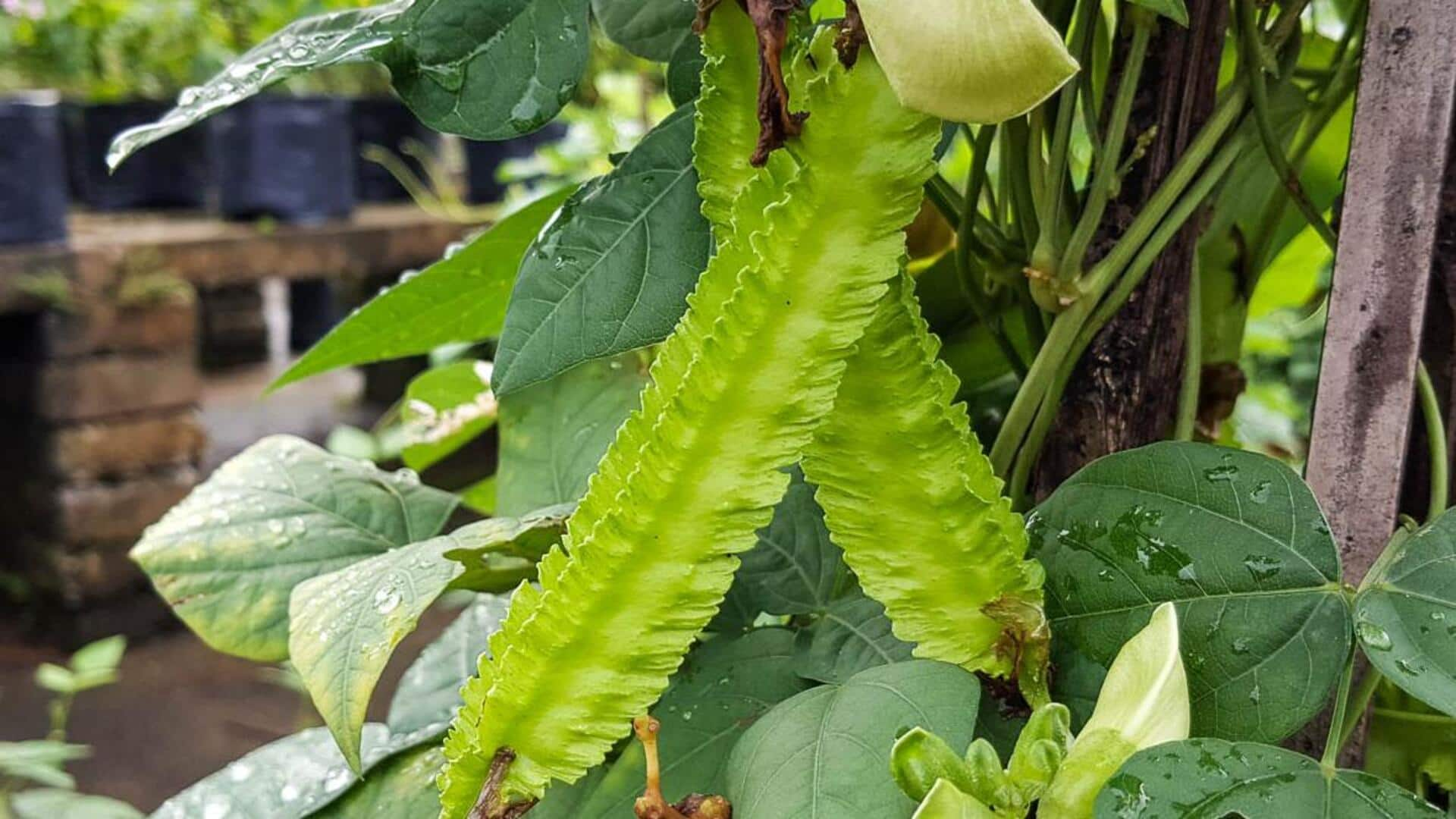
Tips to grow winged bean plants at home
What's the story
If you're looking to spice up your home garden, winged bean plants are a wonderful option. With their nutrient-rich pods and leaves, these tropical legumes can be a great addition to your home garden. They flourish in warm climates and can be grown easily. Given the right conditions and care, you can have a bountiful harvest of winged beans. Here's how you can grow them at home.
Location
Selecting the right location
Choosing the right location is key to successfully growing winged bean plants. They thrive best when given full sunlight for at least six hours every day. The soil should also be well-drained and rich in organic matter for them to grow healthily. If your garden area is small, you can opt for container gardening or raised beds that allow sufficient drainage and root expansion.
Soil preparation
Preparing the soil
Proper soil preparation makes a world of difference for plant growth. Begin with loosening the soil to a depth of approximately 12 inches, taking out any weeds or debris. Mix compost or well-rotted manure into the soil to enrich its fertility and structure. Ideally, you should target a slightly acidic to neutral pH level between 5.5 and 7 for the best results.
Planting
Planting winged beans
Sow winged bean seeds directly into the prepared soil after all danger of frost has passed. Space seeds about two inches apart in rows that are three feet apart, to allow ample room for growth. Cover seeds lightly with soil, and water gently but thoroughly after planting.
Care tips
Watering and maintenance tips
Consistent watering is crucial during the growing season, particularly during dry spells, as winged beans like moist but not waterlogged conditions. Mulching around plants retains moisture while suppressing weeds. Regularly check for pests like aphids or caterpillars, taking action promptly if needed by using natural pest control methods like neem oil or insecticidal soap.